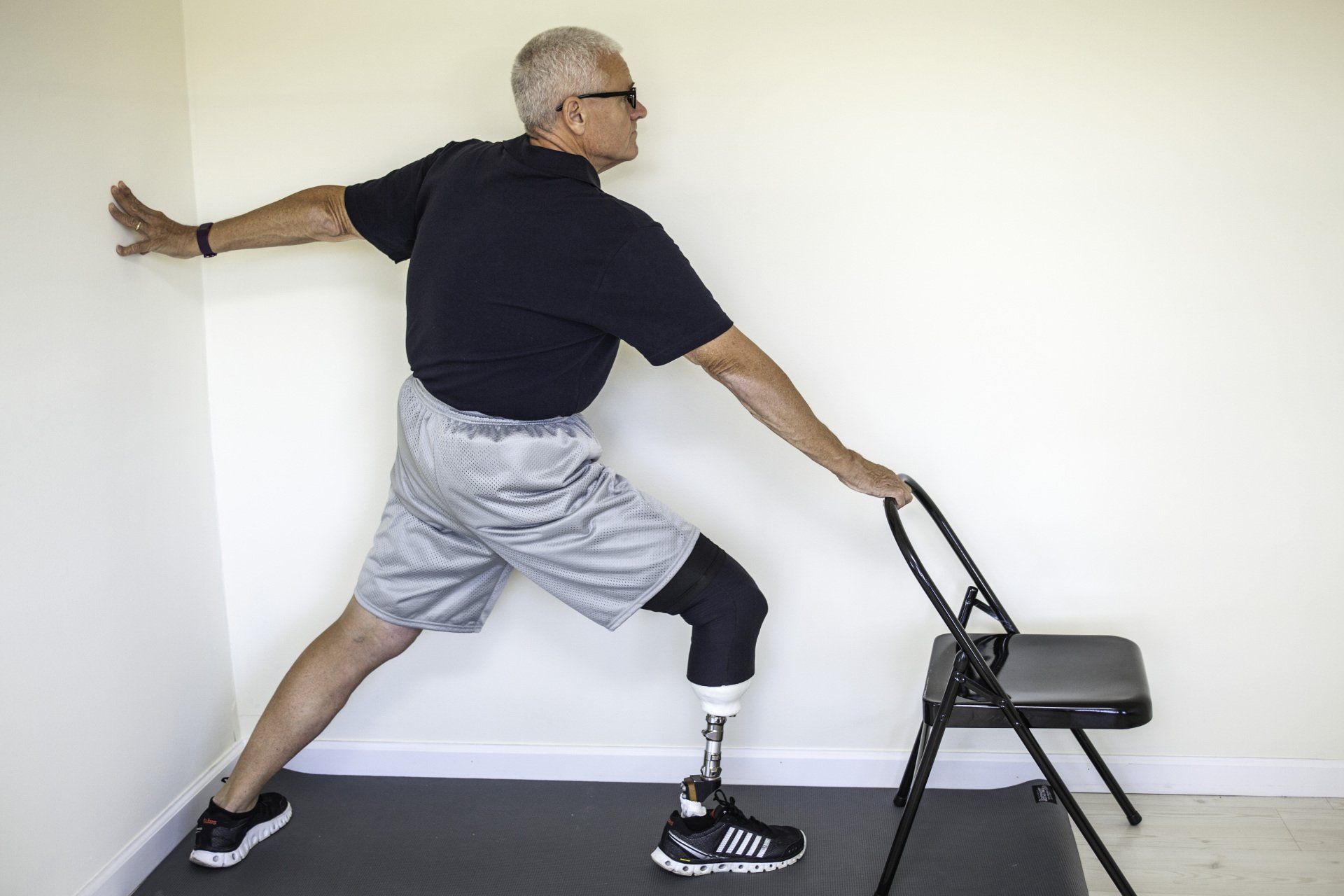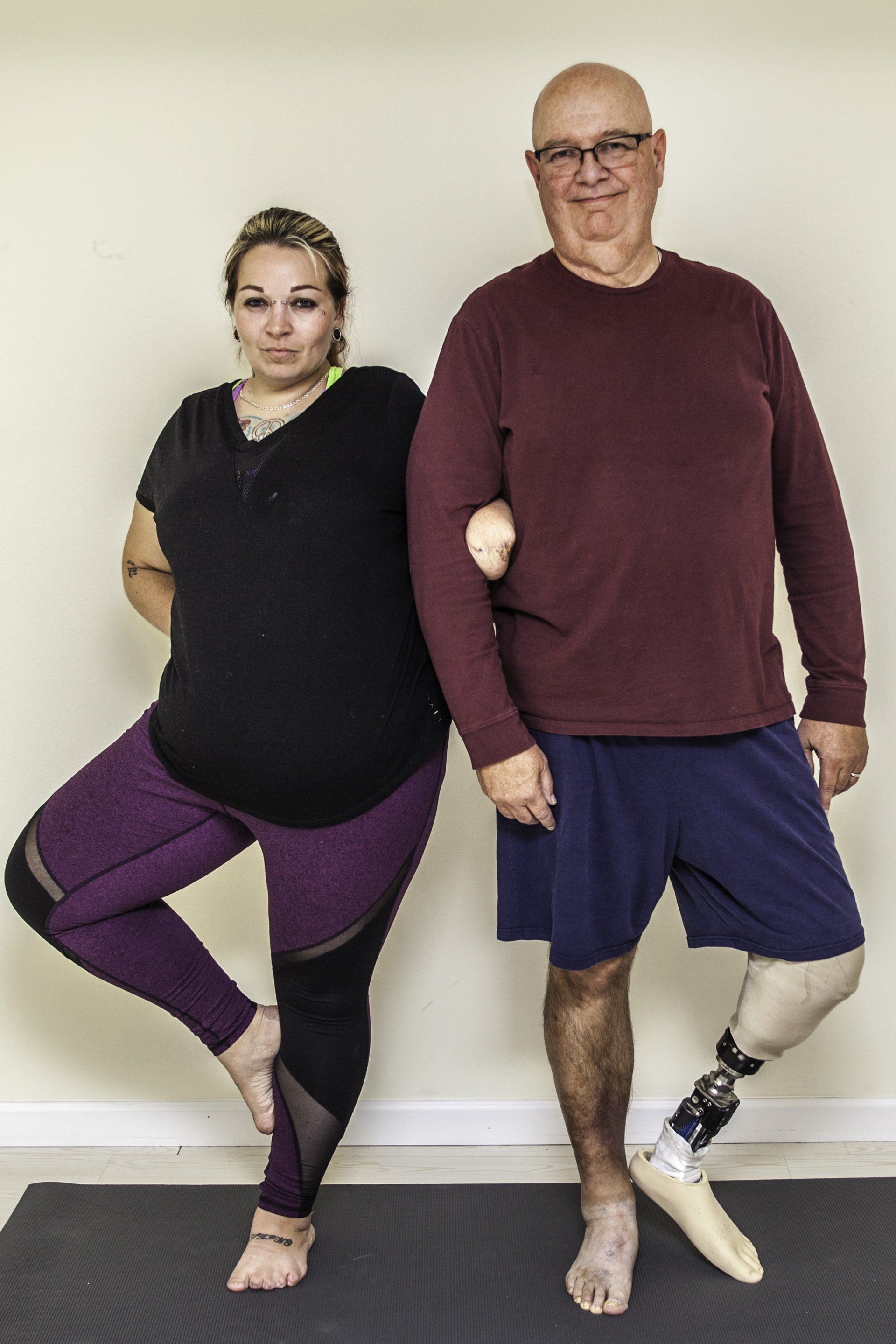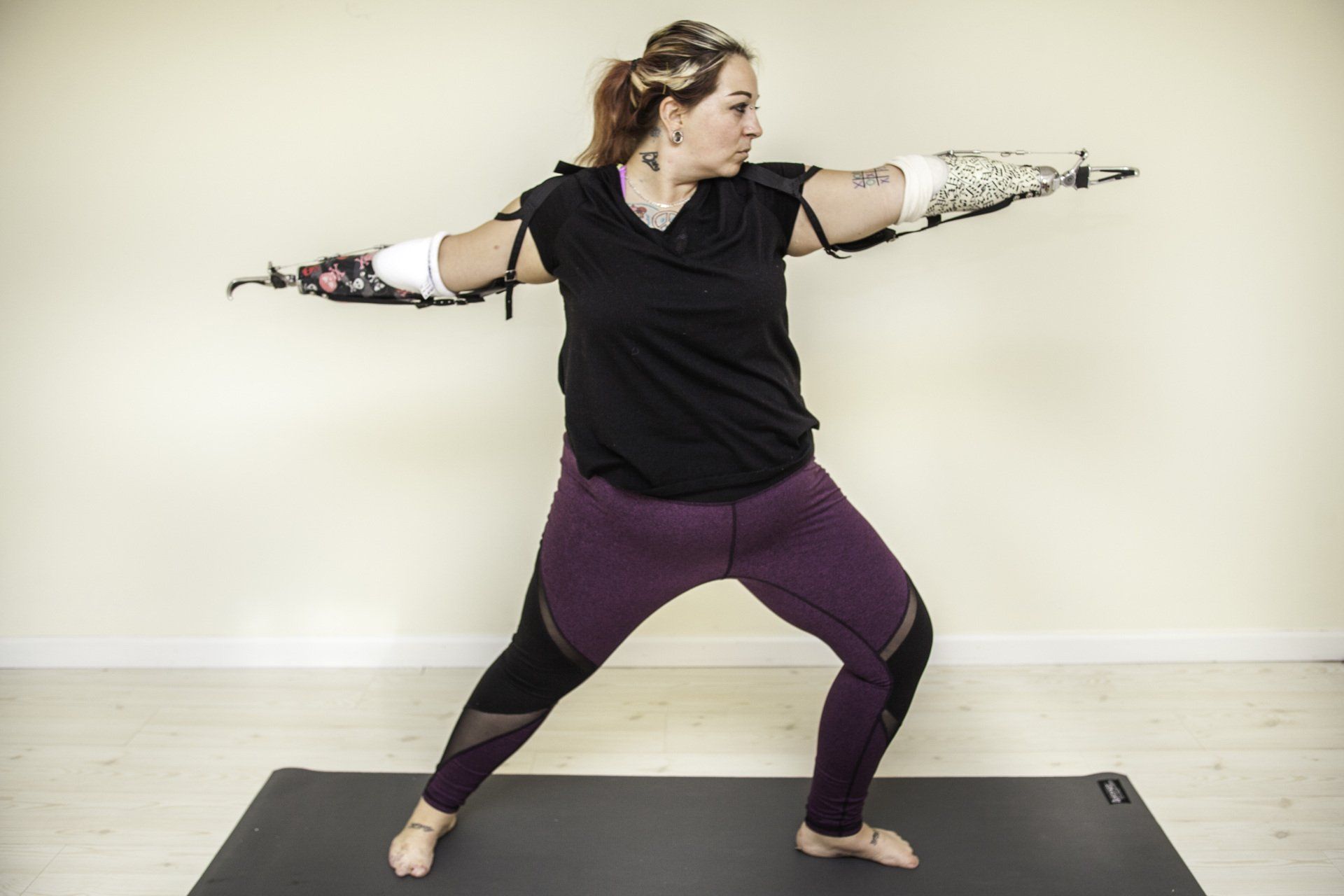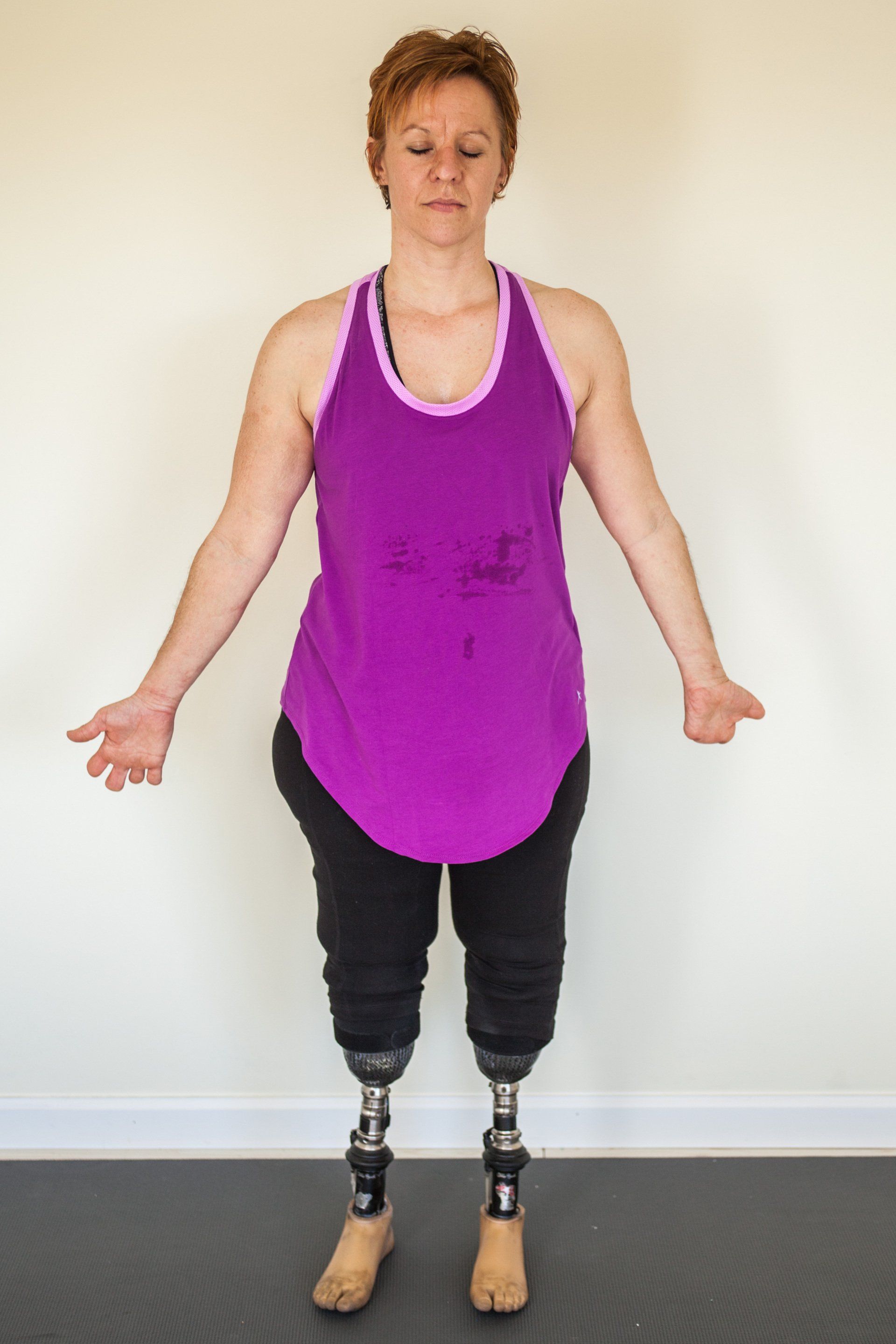AMPUTEES
Yoga is a must for amputees wanting reclaim their health and wellness after limb loss!
Whether you have zero, one, two, three or four limbs I believe yoga is for you!
"Wholeness is not simply having four limbs. Wholeness is knowing you are complete within yourself just as you are"
Marsha Therese Danzig
For 15 years I have been working as a Prosthetist and Orthotist with a wide range of amputees in both the public and private sector, nationally and internationally.
I love helping my patients achieve their mobility goals as well as working with them to improve their overall health and wellness.
I provide assessment based programs and yoga courses that are clinically focussed to meet individual's needs.
These programs and courses are holistic, full-body and patient centered and can be delivered one on one or in small groups.
01 Physical Benefits
- Improves flexibility + joint mobility
- Improves strength + gait
- Improves coordination + balance
- Aids to prevent injury
- Recharges the immune system
- Supports the respiratory + circulatory systems
- Develops good posture
- Tones the body + muscles
- Reduces phantom pain
02 Emotional Benefits
- Assists with coping with limb loss, grief and PTSD
- Improves concentration and energy levels
- Reduces stress and anxiety
- Encourages a positive relationship with the body
- Releases anxiety and feelings of negativity
03 Mental Benefits
- Brings clarity and calm through relaxation and meditation techniques
- Enhances stillness of mind
- Creates a deeper sense of self awareness
- Encourages creativity, self expression and self confidence
- Encourages healthy sleep patterns.
CLINICALLY LEAD YOGA PROGRAMS
There are two options with how I deliver these sessions:
Join an 8 week course which will step you through the fundamentals of yoga, of the breath, the various asana shapes and how to make these accessible for you.
OR
Book individual classes focussed on various topics and enjoy the benefits of Yoga at your own pace.
Most of my pervious clients have joined me for the 8 week course and then continued with individual sessions at their lesiure once this has concluded.
How my Yoga for Amputees Program works
01
Getting to know you
Clients to complete an online assessment outlining past medical history, goals, and expectations.
This information will be used to design an individualised program targeted to meet your needs.
02
Plan your Program: either 8 week Yoga Program or Individual sessions
Clients to have an online zoom meeting to discuss their program and plan how to implement it in their life (frequency of sessions, dates, times, resources and equipment needed etc)
03
Lets get started
Once we have a program in place its time to start breathing and moving! Online zoom sessions to commence with Phoebe
04
Checking in
There will be numerous opportunities to check-in and ensure your program is meeting your needs. I am here to work with YOU and need your input and commitment to help you achieve your goals.
I am a Below Knee amputee with some pre- and post-amputation experience of yoga. Before learning of Phoebe’s classes it had never occurred to me to seek out a specialist/special class in this area, but in retrospect it’s an obvious and excellent idea. Phoebe has tailored sequences & alternatives to suit my circumstances, at the perfect ‘difficult but not impossible’ level. I have left every class without exception feeling happier & more energised. Phoebe’s knowledge around prosthetics and the physical mechanics of amputees has enriched my own knowledge and created a safe and comfortable environment to try new things. All classes have been online and physical distance hasn’t been a barrier, the delivery is great and being able to join from home is convenient.
I remember after becoming an amputee, despite having practiced yoga for many years with an open-minded & supportive group, I somehow felt yoga wasn’t suitable for me anymore. To anyone who feels that same hesitation about approaching new things, I would heartily recommend Phoebe’s classes for their underlying appreciation of everything that goes along with being an amputee, and as a way to connect with your body in a safe, positive, non-medicalised way.
Angela
FREQUENTLY ASKED QUESTIONS
WHEN CAN I START DOING YOGA FOR AMPUTEE CLASSES
Prior to commencing classes with me, ensure you have chatted about this with your physical therapist, prosthetic and or/doctor. Once you have been given the all clear click on the link to contact me and we can start putting your individualised yoga program together.
CAN I INCLUDE THESE CLASSES IN MY NDIS PLAN
Depending on how your NDIS plan is managed, there may be an option for these programs to be included
WHAT ARE THE BENEFITS OF DOING YOGA AS AN AMPUTEE
Yoga is a holistic medicine that works on increasing patient wellness without invasive procedures or excessive prescriptive medications. I believe it is a practice which allows the body and the mind to heal and can help make life better for amputees, especially as they grapple with prosthetics, body image, pain, freedom of movement and other residual effects of limb loss. Refer to the dot point above for specific details on physical, emotional and mental benefits.
CAN I DO THIS PROGRAM IF I HAVE NEVER DONE YOGA BEFORE
Absolutely! These programs are suitable for complete beginners to amptutees who have been practicing yoga for a long time. I would recommend doing the 8-week course first as this covers all areas of yoga so you feel confident to then continue at your own pace either with sessions with me or at a local yoga studio near you.
WHAT SHOULD I BE AWARE OF WHEN PRACTICING YOGA
The most important thing for an amputee when practicing yoga is that they are safe and feel secure.
- Ensure you are receiving guidance from a qualified professional (a yoga teacher and ideally a teacher who has undertaken Amputee Yoga Training)
- Ensure you listen to your body throughout the class and are honest with yourself about your capabilities
HOW DO I SET UP MY HOME YOGA STUDIO
- Find a space in your home where you can move freely and safely. Ideally this space should be somewhere quiet (in a room/ area where you won't be disturbed and can focus on your practice
- If you have a yoga mat, lay this on the ground or be in an area with carpet/ comfortable floor where you will be able lay down (if you are able).
- To practice safely, props are one of your best friends. Set yourself up with props such as a chair, yoga blocks (or books), bolsters (or pillows), blankets and yoga straps (or belt/ ribbon) and have a wall nearby to assist you with balances and for additional stability in certain poses.
- Have a drink bottle close by
- Wear comfortable clothes that are easy to move in.







